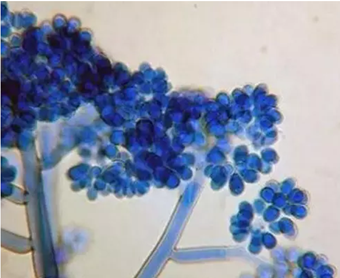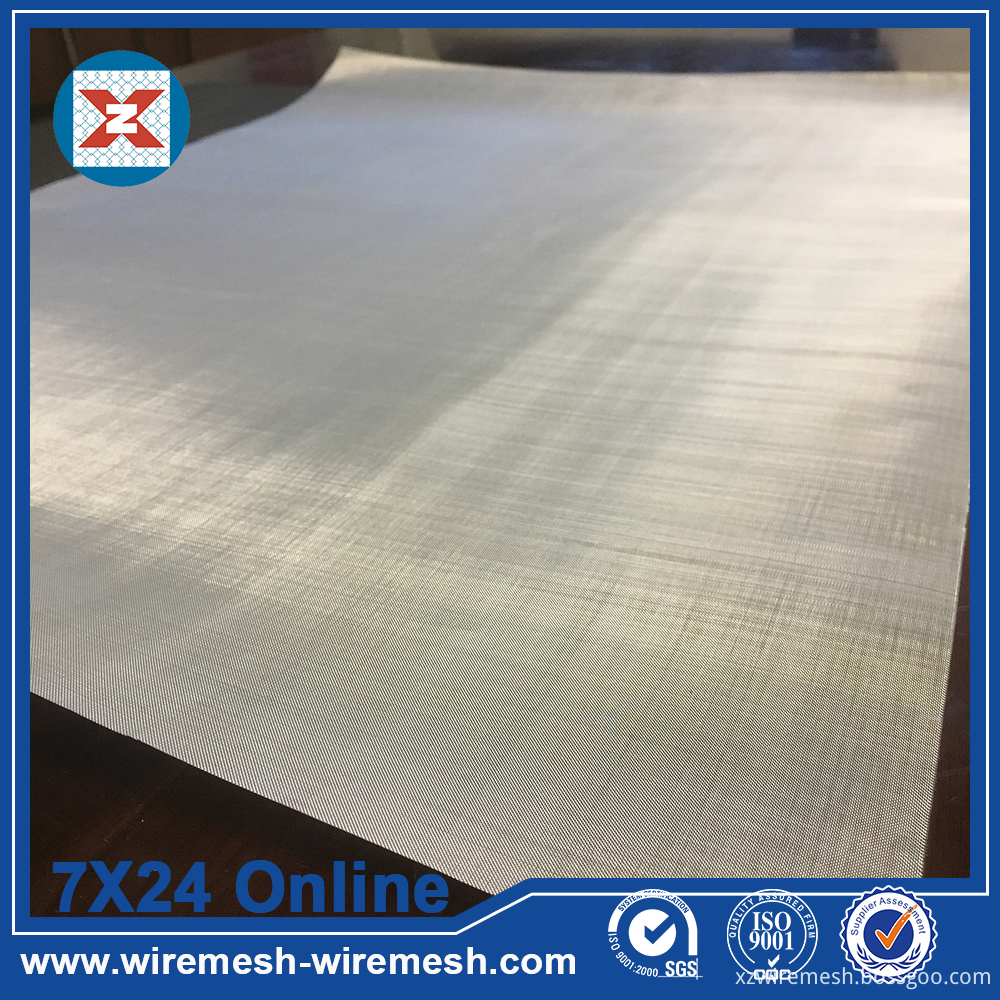Grape gray mold, cucumber gray mold, tomato gray mold, strawberry gray mold, eggplant gray mold, amaranth gray mold... so many gray molds on fruit trees and vegetables, no matter which one, are very Difficult to prevent and treat diseases. Farmers often complain that when gray mold occurs, even if all the fungicides that can be bought, even special-purpose fungicides specially used to control gray mold, or spray or smoke, do not work. why? Gray mold is a bad treatment The pathogens are fast-growing and the number of spores is staggering. The conidia of the gray mold pathogens (the taupe molds on the susceptible parts) are as sharp as the grape spikes under the microscope. Use a needle to pick a little gray mold on the diseased fruit and place it under the microscope. This is like this: Don't see it, don't worry, pick more, and then less, then use a microscope to see: Just a little bit, the number of conidia is also unclear. The viability of the pathogen is very strong: the adaptability and viability of the gray mold pathogen are strong, and it can be ingested from the living plant tissue or in the dead body, and belongs to the semi-living nutrient pathogen. Taking Cucumber gray mold as an example, the conidia of the pathogen can survive on susceptible fruits, petals, flower buds, stems and leaves for 4 to 6 months, and the sclerotia has a longer survival time. Botrytis cinerea can survive in the soil, on the plant, on the back wall of the greenhouse, on the column, on the hanging line, and spread to the plant through airflow, rainwater, and farming operations. Once the conditions are right, it will germinate and infect quickly. The pathogen is easy to invade from the wound: the gray mold pathogen likes "sweet and tender", and the most infested parts are flowers, young fruits and fruits of the ripening period. The reason is that some secretions on the flower buds will stimulate the rapid propagation of the bacteria, and once the wounds appear on the young epidermis or the mature fruit, the bacteria will follow the oozing juice from these parts. Some investigations have found that Botrytis cinerea has the highest probability of invading fruits from residual petals, accounting for 86.27% to 91.61% of all invasions. After the flower is used in the production, the petal residual rate of the fruit pedicle is 67.71%-100%. This is one of the reasons for the high incidence of tomato gray mold in greenhouses. High humidity gray mold is prone to outbreak: weather is an important cause of the incidence of gray mold. Botrytis cinereas prefer cooler temperatures (18 to 23 ° C) and high humidity (85% or more), as well as poorly lit weather. Therefore, gray mold is prone to outbreaks in continuous cloudy snow or rainy weather. The pathogenicity of the pathogen is strong: the rapid pathogenicity of the gray mold pathogen is extremely strong, and once invaded into the plant organs, symptoms will be rapidly manifested, and new conidia will be rapidly produced. Therefore, once a disease occurs, it means that the amount of bacteria is easily explosively expanded, and a slight delay will lead to an outbreak. Gray mold, anti-heavy treatment Due to the above reasons, it is often late to fight drugs after the occurrence of gray mold. Therefore, gray mold is important in prevention. As long as we further understand: Under what temperature and humidity conditions, the gray mold pathogen is easy to breed and invade, how to invade on the surface of the plant body, how the plant body responds and reacts, and whether there is still a chance after invading into the plant body. If you control it, you will find that there are many opportunities to prevent and control the occurrence of gray mold. 1 Reduce the number of pathogens of gray mold Botrytis cinerea is inhabited in the soil and in the remaining tissues of the plant. Therefore, before the plant or fruit tree is planted or in the early stage of planting, and before and after flowering, especially after the flowering, pay attention to clean up the diseased leaves and flowers. And the fruit, etc., and then use the fungicides such as flavonoids, scopolamine, and bacteriocin to completely treat the soil, flower, young fruit and the whole greenhouse, which can greatly reduce the number of gray mold bacteria. 2 early medication control The study found that when the gray mold pathogen infects the plant, it first comes into contact with the plant body. In the vicinity of the stomata, lenticels or wounds, the conidia germinate into the germ tube and the attached cells, and the attached cells secrete keratinase and lipase to dissolve. The enzyme passes through the stratum corneum, destroys the epidermal layer, forms an invasive outbreak on the surface of the plant, and secretes cell wall degradation such as endogenous polygalacturonase, pectin methylesterase, cellulase and hemicellulase. Enzymes, which break down plant organs and help the hyphae extract the nutrients. Cucumber gray mold: After understanding the infestation characteristics of gray mold pathogens, we can take corresponding measures to prevent and control the different stages of gray mold disease. 1 Before sputum flowering and bagging, when disinfecting scented flowers with fungicides, or before fruit bagging, use bactericides such as flavonoids and ketones to pre-sterilize and protect them. The effect will be very good. 2 In the initial onset, early medication control When there are sporadic lesions in the field, pyraclostrobin or azoxystrobin is used to compound the carbendazim and iprodione to kill the germinating bacteria. The key to this measure is to grasp the timing, move quickly, and not delay. 3 Spraying antibiotics to inhibit the spraying of Bacillus subtilis, Trichoderma harzianum, and pink sticky fungus, etc., using these antibiotics to deteriorate the germination environment of gray mold pathogens, or inhibit the secretion of plant tissue degradation enzymes by the bacteria, while killing they. However, it is necessary to pay attention to the temperature and humidity conditions at the time. These antibiotics also need to have a suitable temperature and humidity environment. 4 “Milk + water†also has a control effect. When a sporadic diseased plant is found, continuous spraying of 1:9 milk aqueous solution can effectively prevent and control gray mold. 5 When the disease is serious, when multiple measures are taken and the disease has begun to occur seriously, more measures must be taken. First clean up the diseased leaves, diseased flowers, diseased fruit, and then spray some special new fungicides, such as boscalid. 3 activate the plant's immune system When the human body encounters a pathogen, it will initiate the corresponding immunization program, and the plants will be the same. In general, the immune response of plants to pathogens is divided into three major steps: The first step is to identify whether the microorganisms adhering to the surface of the plant are harmful. If it is found to be harmful, it will start the second step, which is to induce the toxic substances secreted by the bacteria. Finally, the immune protein in the plant is activated to secrete biochemical substances that can destroy and resist the virulence of the bacteria. For example, chitinase degrades the cell wall of the pathogen, phenylalanine ammonia-lyase inhibits the activity of the pathogen, and polygalacturonase inhibits the destruction of the plant cell wall by the pectin-degrading enzyme secreted by the pathogen. Grape gray mold: We can use these immune responses of plants to pathogens in two ways. 1 Breeding resistant varieties For example, the study found that using the disease resistance genes contained in wild thorn grapes in China, we can breed new grape varieties with better resistance. The red hard fruit tomato is more resistant to gray mold than the pink fruit tomato. 2 Healthy cultivation, improve the disease resistance of plants, such as more scientific fertilization and watering, so that plants grow stronger, rather than prosperous. 3 After using the immune system activator to understand the immune response of plants, researchers have discovered a number of things that induce plant immune response, such as the very fine chain spore activation protein developed by the Chinese Academy of Agricultural Sciences Plant Protection . A very good plant immune system activator. However, plant immune system activators cannot be used frequently or used at will. The key is to use them at the beginning of the disease, when there are sporadic leaves in the field, or when the weather suitable for gray mold outbreaks begins to appear. Of course, this immune activation inducer can also be used in combination with a chemical bactericide, and the effect will be better. 4 Adjust the growth environment of plants According to the plant's demand for temperature and humidity growth, control the temperature, humidity and light conditions in the shed as much as possible, and control the maximum temperature during the day at 25~30°C, and control the relative humidity below 85%, pay attention to ventilation and light management. Plant density should not be too large, do not spray water on cloudy days, spray in the morning in the cold winter season. More pesticide knowledge , please pay attention to China Pesticide Network (Source: Zhao Zhanzhou New Farmhouse)
Anping Xinzheng Metal Wire Mesh Co. Ltd produces and sells all kinds of specifications, models and materials of Woven Mesh Products. Our wire mesh products are highly praised by buyers all over the world.
Woven mesh is produced according to the mechanical engineering industry weaves JB/T5979-92 standard, the standard with international standard ISO4783/1990.
Wire mesh mainly adopts plain weave, twill weaving and Dutch weaving
The main material is stainless steel wire(SS 304, SS316, SS316L, SS 302), galvanized wire, black wire and so on
The main features of woven mesh are precise structure, uniform mesh, good corrosion resistance and durability.
Main applications of wire cloth: sifting and filtration in acid and alkali environment, oil industry as mud net, chemical fiber industry as sun filter screen, electroplating industry as pickling net, gas liquid filtration and other media separation.
Woven Mesh Products Woven Mesh Products,Metal Cloth,Woven Steel Mesh,Stainless Steel Mesh Anping Xinzheng Metal Wire Mesh Co., Ltd , https://www.sievingmesh.com




Why can't gray mold be cured?